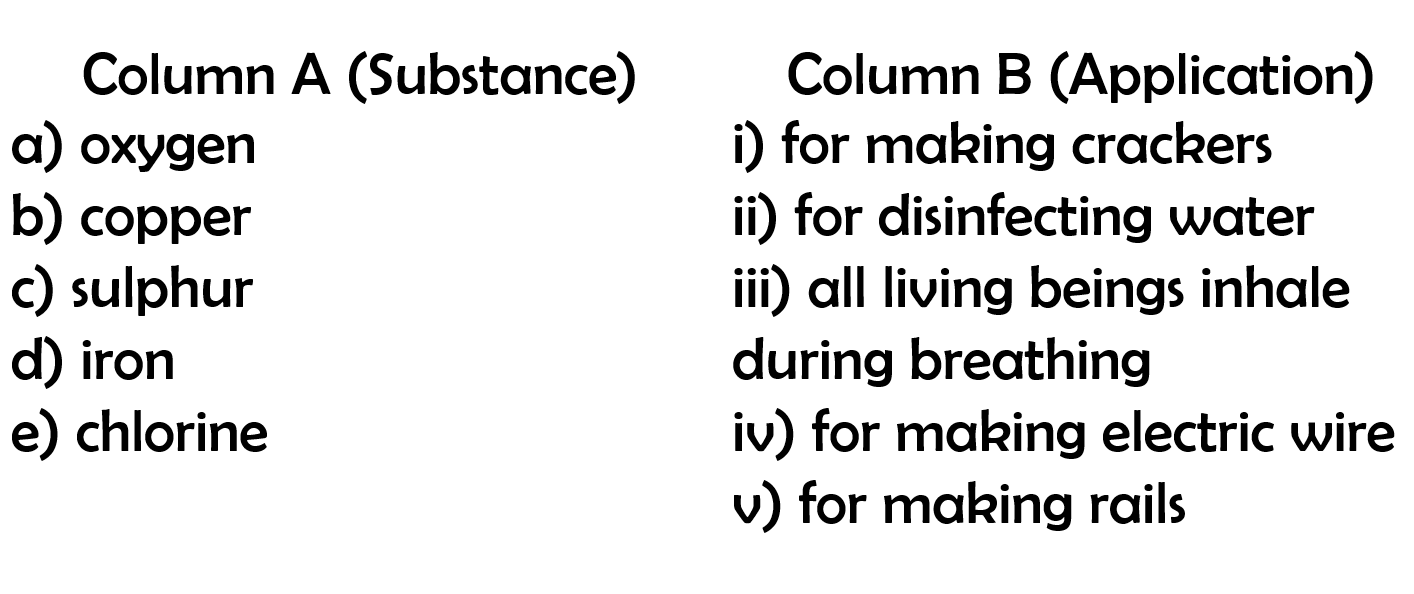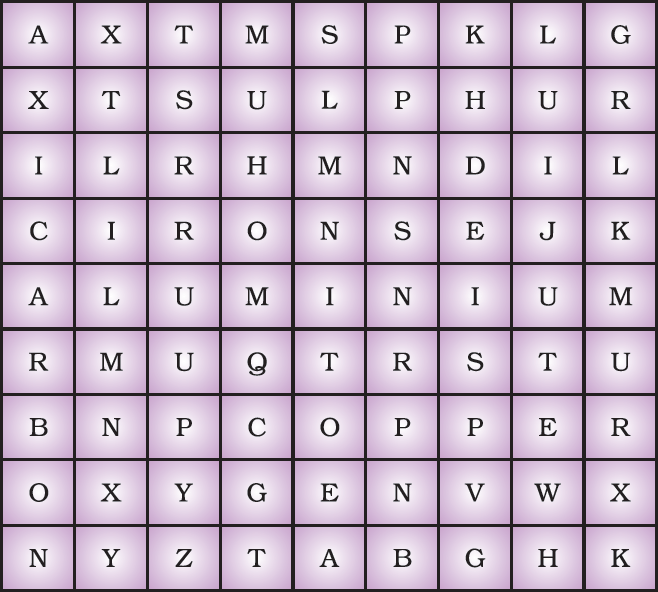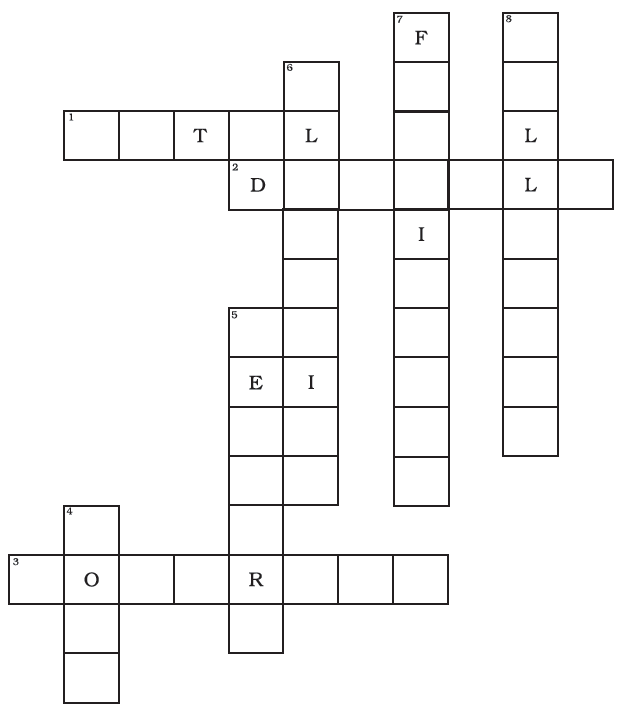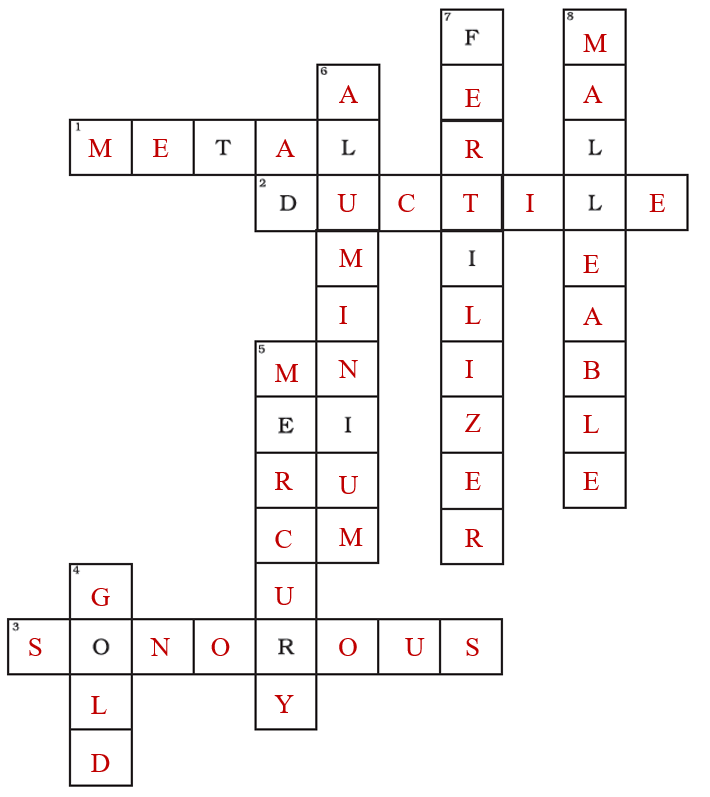Chapter 4 - Materials: Metals and Non-Metals
Multiple Choice Questions
Question 1: Which of the following is not a metal?
a) copper
b) sulphur
c) aluminium
d) iron
Answer: b) sulphur
Question 2: The substance that will be flattened on beating with a hammer is
a) crystal of iodine
b) lump of sulphur
c) piece of coal
d) zinc granule
Answer: d) zinc granule
Question 3: Boojho has learnt that non-metals on beating with a hammer are generally broken into pieces. Which of the following is a non-metal?
a) iron nail
b) aluminium wire
c) copper plate
d) piece of coal
Answer: d) piece of coal
Question 4: Materials which can be drawn into wires are called ductile. Which of the following is not a ductile material?
a) silver
b) copper
c) sulphur
d) aluminium
Answer: c) sulphur
Question 5: Metals are generally hard. Which of the following metals is an exception and can be cut with a knife?
a) iron
b) sodium
c) gold
d) magnesium
Answer: b) sodium
Question 6: Metals are generally solid. Which of the following metals is in the liquid state at room temperature?
a) mercury
b) silver
c) aluminium
d) sodium
Answer: a) mercury
Question 7: Metals generally react with dilute acids to produce hydrogen gas. Which one of the following metals does not react with dilute hydrochloric acid?
a) magnesium
b) aluminium
c) iron
d) copper
Answer: d) copper
Question 8: Which of the following reacts with cold water vigorously?
a) carbon
b) sodium
c) magnesium
d) sulphur
Answer: b) sodium
Question 9: The metal which produces hydrogen gas on reaction with dilute hydrochloric acid as well as sodium hydroxide solution is
a) copper
b) iron
c) aluminium
d) sodium
Answer: c) aluminium
Question 10: Which of the following non-metals reacts and catches fire on exposure to air?
a) phosphorus
b) nitrogen
c) sulphur
d) hydrogen
Answer: a) phosphorus
Question 11: Generally metallic oxides are basic and non-metallic oxides are acidic in nature. Solution of which of the following oxides in water will change the colour of blue litmus to red?
a) sulphur dioxide
b) magnesium oxide
c) iron oxide
d) copper oxide
Answer: a) sulphur dioxide
Question 12: Which of the following property is not responsible for copper to be used as electrical conduction wires?
a) ductility
b) colour
c) good conductor of electricity
d) it is solid
Answer: b) colour
Very Short Answer Questions
Question 13: Name two soft metals which can be cut with a knife.
Answer: The two soft metals which can be cut with a knife are sodium and potassium.
Question 14: Which non-metal is essential for our life and all living beings inhale it during breathing?
Answer: The non-metal that is essential for our life and all living being inhale it during breathing is oxygen.
Question 15: Name two major non-metals which are present in fertilisers and enhance the growth of plants.
Answer: The two major non-metals which are present in fertilisers and enhance the growth of plants is nitrogen and phosphorus.
Question 16: Which non-metal is used to disinfect water?
Answer: The non-metals which is used to disinfect water is chlorine.
Question 17: A purple coloured non-metal forms a brown solution in alcohol which is applied on wounds as an antiseptic. Name the non-metal.
Answer: The non-metal which is a purple coloured non-metal forms a brown solution in alcohol which is applied on wounds as an antiseptic is iodine.
Question 18: Zinc sulphate forms a colourless solution in water. Will you observe any colour on adding copper turning in it?
Answer: No we can’t observe any colour on adding copper because the zinc is more reactive than copper and low reactive metal can’t displace highly reactive metal.
Question 19: Why are bells made of metals?
Answer: The bells are made of metals only because metals are sonorous i.e. produce sound.
Question 20: Which liquid metal is used for making thermometers?
Answer: Mercury is the liquid metals which is used for making thermometers because mercury is the liquid metals which is present at room temperature.
Question 21: Which of the following metals can displace the other two metals from their salt solutions?
zinc, iron, copper
Answer: Zinc is the metals which can displace the other two metals (iron and copper) from their salt solutions because the zinc is more reactive than iron & copper and more reactive metal can displace less reactive metal.
Short Answer Questions
Question 22: Paheli bought a statue made of copper. To her surprise it acquired a dull green coating after a couple of months. Explain the reason.
Answer: Paheli can see the dull green coating after a couple of months on the copper statue because of the green material is a mixture of copper hydroxide and copper carbonate formed due to reaction of copper with moist air (water, oxygen and carbon dioxide).
Question 23: In Fig 4.1 you find that the bulb glows when an iron nail is placed between two ends of wire. Complete the following sentences on the bases of this fact.

a) __________ is a metal.
b) Metals are good __________ of electricity.
Answer:
a) Iron is a metal.
b) Metals are good conductors of electricity.
Question 24: If in Fig. 4.1 iron nail is replaced by a wooden stick, will the bulb glow or not? Justify your answer.
Answer: If the iron nail is replaced by a wooden stick, the bulb will not glow because wood is a non-metal and non-metals are generally poor conductors of electricity and heat.
Question 25: Paheli prepared a blue coloured solution of copper sulphate in beaker A and placed an iron nail in it. Boojho prepared a yellowish green solution of ferrous sulphate in beaker B and placed a copper wire in it. What changes will they observe in the two beakers after an hour?
Answer: In beaker A, a reddish brown layer of copper will deposit on the iron nail and the blue coloured solution will become yellowish green. On the other hand, no change is observed in beaker B.
Question 26: A doctor prescribed a tablet to a patient suffering from iron deficiency. The tablet does not look like iron. Explain.
Answer: The tablet does not look like iron because these tablets are made from salts of iron hence it does not look like iron.
Question 27: Match the substances in Column A with their applications given in Column B.

Answer:

Long Answer Questions
Question 28: Some of the following statements are incorrect. Find the incorrect statements and correct them.
a) The property of metals by virtue of which they can be drawn into wires is called ductility.
b) Metals are good conductor of electricity but poor conductor of heat.
c) Articles made of metals produce ringing sound when struck hard.
d) Oxides of non-metals and metals are acidic in nature.
e) A less reactive metal replaces a more reactive metal from its salt solution in water.
Answer:
a) True
b) False; Metals are good conductors of heat and electricity.
c) True
d) False; Oxides of metals are basic in nature because they react with water to form bases. Oxide of non-metals are acidic in nature because they react with water to form acids.
Question 29: Iron is more reactive than copper. Can you write an activity to show this?
Answer: The following activity tells how is iron more reactive than copper:
Take one 100 mL beaker. Take about 50 mL of water in the beaker. Dissolve in each beaker a teaspoonful of copper sulphate solution and put iron nail in it. Keep the beakers undisturbed for some time. We see that the colour of copper sulphate solution changes from blue to green. This proves that the iron has displaced copper from its salt solution. The following is the reaction:
CuSO₄ + Fe → FeSO₄ + Cu
In such a reaction, the more reactive metal displaces the less reactive metal. Thus, the above activity shows that iron is more reactive than copper.
Question 30: Fill in the blanks to complete the following paragraph.
The name of the product formed in the reaction of sulphur and _____________ is sulphur dioxide gas. When sulphur dioxide is dissolved in _________________, sulphurous acid is formed. The sulphurous acid turns _____________ litmus paper to ____________. Generally oxides of __________ are acidic in nature. After completing the paragraph write two questions which you can raise on the basis of this information.
Answer:
The name of the product formed in the reaction of sulphur and oxygen is sulphur dioxide gas. When sulphur dioxide is dissolved in water, sulphurous acid is formed. The sulphurous acid turns blue litmus paper to red. Generally oxides of non-metals are acidic in nature.
• Which gas is formed when sulphur reacts with oxygen?
• What is the nature of oxides of non-metals?
Question 31: Find out the names of three metals and three non-metals from the box given as Fig 4.2.

Answer:

Question 32: Complete the crossword given in Fig. 4.3 with the help of the clues.

Across
1. Which is generally hard, ductile, malleable and sonorous.
2. A metal is called so it can be drawn into wires.
3. Metal bells are used because of this property.
Down
4. A metal generally used for making jewellery.
5. A metal which is liquid at room temperature.
6. A metal which reacts with acid as well as base to form hydrogen gas.
7. Substances used to enhance the growth of plants.
8. Property by virtue of which metals can be beaten into thin sheets.
Answer:

No comments:
Post a Comment